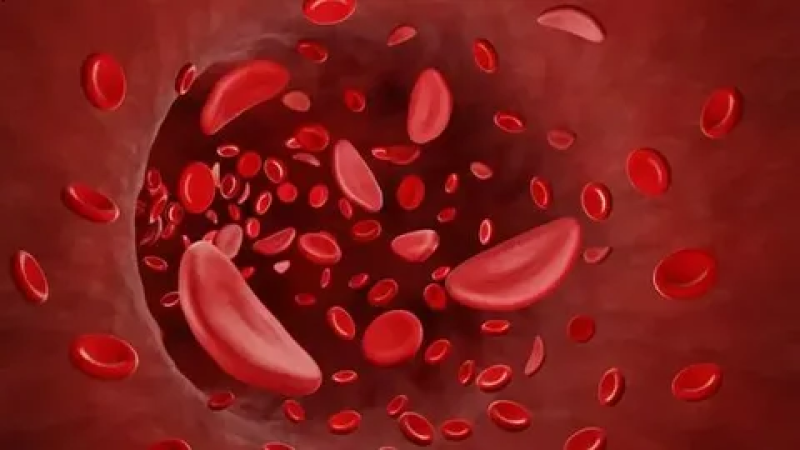Sickle Cell Anemia (SCA) remains a significant global health challenge, affecting millions worldwide, particularly in regions such as sub-Saharan Africa, India, and the Middle East. This hereditary blood disorder is characterized by abnormally shaped red blood cells that cause vascular blockages, chronic pain, anemia, and increased risk of infections. Over the years, the therapeutic landscape for SCA has evolved considerably, marked by advancements in both pharmacological and gene-based treatments.
Comprehensive Overview of Current Sickle Cell Anemia Therapeutics
Sickle Cell Anemia Therapeutics as strategies for sickle cell anemia traditionally focused on managing symptoms and reducing complications. Hydroxyurea, the first FDA-approved drug for SCA, remains a cornerstone in treatment, known to promote the production of fetal hemoglobin and reduce sickling episodes. Alongside supportive measures such as blood transfusions, pain management, and infection control, hydroxyurea has significantly improved patient outcomes. However, its efficacy varies, and concerns regarding long-term safety and adherence persist.
Recent years have witnessed the introduction of novel pharmacotherapies targeting different pathophysiological pathways of SCA. Agents like L-glutamine were approved to reduce oxidative stress in red blood cells, thereby decreasing vaso-occlusive crises frequency. Additionally, voxelotor, a hemoglobin oxygen-affinity modulator, received regulatory approval to prevent sickling by stabilizing hemoglobin. Crizanlizumab, a monoclonal antibody targeting P-selectin, offers another mechanism to reduce blood vessel occlusion. These newer molecules symbolize a shift toward precision medicine, tailoring treatment to individual patient needs and disease severity.
In-depth Exploration of Gene Therapy Innovations in Sickle Cell Treatment
The most groundbreaking progress in sickle cell anemia therapeutics lies in gene therapy, offering the potential for a curative approach rather than symptomatic relief. Gene editing technologies, including CRISPR-Cas9, are being applied to correct the defective beta-globin gene responsible for sickling red blood cells. Clinical trials have demonstrated promising results with patients achieving transfusion independence and normalization of hemoglobin levels post-treatment.
Another approach involves the introduction of genetically modified hematopoietic stem cells engineered to produce anti-sickling hemoglobin variants. This autologous stem cell transplantation aims to minimize immunological complications associated with allogeneic transplants. While challenges such as therapy cost, accessibility, and potential off-target effects remain, gene therapy is rapidly evolving as a transformative modality in the SCA treatment landscape.
Navigating Sickle Cell Therapeutics Trends and Competitive Dynamics
The global market for sickle cell anemia therapeutics is undergoing significant expansion, driven by increasing disease awareness, improved diagnostic capabilities, and the advent of novel therapies. Market participants are focusing on research and development to harness innovative treatment modalities, including small molecules, biologics, and gene-based therapies.
A comprehensive market research report on sickle cell anemia therapeutics offers valuable insights into competitive strategies, key players, regulatory frameworks, and ongoing clinical trials. This report serves as an essential resource for pharmaceutical companies, investors, clinicians, and policymakers aiming to navigate the complex market ecosystem. By analyzing pipeline developments, pricing trends, and regional market penetration, stakeholders can make informed decisions to support drug commercialization and healthcare accessibility.
Transactional Insights into Sickle Cell Therapy Accessibility and Patient Support Programs
Accessibility to advanced sickle cell anemia treatments remains a critical challenge, especially in low-resource settings where disease prevalence is highest. Costs associated with novel gene-based therapies and emerging pharmacological agents are often prohibitive, necessitating innovative patient support programs and reimbursement models.
Healthcare providers and payers are increasingly adopting value-based care principles to ensure that patients receive effective therapies without excessive financial burden. Programs facilitating insurance coverage, patient assistance, and education about treatment adherence are paramount in optimizing therapeutic outcomes. Moreover, digital health platforms and telemedicine have emerged as instrumental tools in enhancing patient engagement and monitoring treatment response.
Exploring transactional aspects of sickle cell therapy supply chains, such as distribution logistics and pharmacy partnerships, unveils the intricate framework ensuring timely and equitable access to medications. This dimension is vital for pharmaceutical companies and healthcare organizations seeking to expand their reach and improve patient quality of life.
Commercial Evaluation of Emerging Therapeutics and Investment Opportunities
The commercial outlook for sickle cell anemia therapeutics is robust, underpinned by escalating demand for innovative treatment solutions and an expanding patient base. Pharmaceutical companies are channeling resources into clinical pipeline progression, regulatory approvals, and strategic collaborations to fortify their market position.
Investors and venture capital firms are increasingly interested in startups specializing in gene editing, biologics, and targeted therapies for sickle cell anemia. The confluence of scientific innovation and an unmet medical need creates a favorable environment for novel drug development and market entrance.
Additionally, commercialization strategies encompassing patient education, advocacy partnerships, and healthcare professional training are critical to enhancing market penetration and ensuring sustained revenue growth. A commercial analysis that integrates market dynamics, competitive intelligence, and regulatory landscape can empower stakeholders to capitalize on growth prospects in the sickle cell anemia therapeutics domain.
Get This Report in Japanese Language: 鎌状赤血球貧血症の治療薬
Get This Report in Korean Language: 소혈구빈혈 치료제
Read More Articles Related to this Industry- Recent developments in Epinephrine Industry
About Author:
Ravina Pandya, Content Writer, has a strong foothold in the market research industry. She specializes in writing well-researched articles from different industries, including food and beverages, information and technology, healthcare, chemical and materials, etc. (https://www.linkedin.com/in/ravina-pandya-1a3984191)
